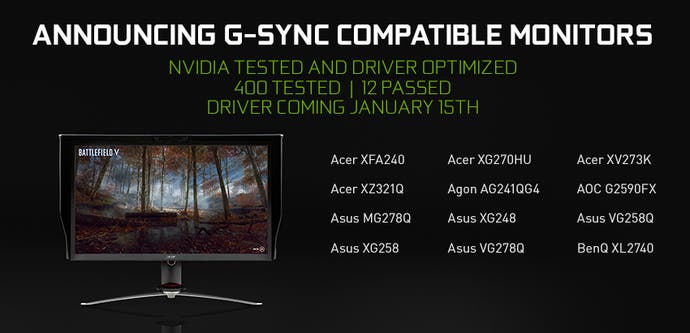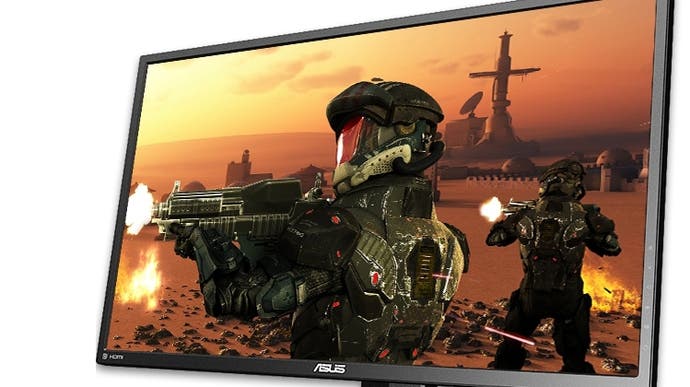Nvidia GeForce graphics cards set to support FreeSync displays
12 officially compatible monitors, but Nvidia will let you test any unsupported FreeSync screen.
Six years after G-Sync debuted, Nvidia's proprietary variable refresh rate (VRR) solution for gaming monitors is becoming a little more open. The company announced at CES 2019 that it will soon certify certain FreeSync monitors as 'G-Sync Compatible'. That's big news, as it means that Nvidia graphics card owners will have the option of buying FreeSync gaming monitors instead of being limited to G-Sync models, which are often significantly more expensive due to their physical G-Sync module.
Nvidia tested more than 400 FreeSync monitors to find those that met its standards for G-Sync. That included looking at metrics like a wide frame-rate range where VRR could be enabled (eg 60Hz to 144Hz), whether VRR was enabled by default and whether VRR gaming produced any unwanted artefacts like ghosting or flickering. Just 12 monitors made the cut, and they have become the first G-Sync Compatible monitors on the market. G-Sync Compatible monitor support will arrive in the first 2019 Game Ready driver, which is scheduled to be released on January 15th.
Update: With the driver now available, we've investigated the situation and can now recommend the best FreeSync monitors for Nvidia graphics cards - including models outside of Nvidia's official list. The original article continues below...
Here are the monitors Nvidia selected, including some that we think are the best gaming monitors on the market:
- Acer XFA240
- Acer XG270HU
- Acer XV273K
- Acer XZ321Q
- Agon AG241QG4
- AOC G2590FX
- Asus MG278Q
- Asus XG248
- Asus VG258Q
- Asus XG258
- Asus VG278Q
- BenQ XL2740

Intriguingly, Nvidia will also allow users to test G-Sync support on other monitors that support FreeSync, even if Nvidia hasn't listed them as G-Sync Compatible. That means that if you have a FreeSync monitor and a Nvidia 10-series or later graphics card, you may as well flip the switch and see what happens. Nvidia warns that the monitor "may work partly or may not work at all" with G-Sync enabled, but it's certainly worth trying.
It seems likely that we'll see a crowd-sourced list of unofficial G-Sync Compatible monitors once the feature goes live later this month, so stay tuned. Nvidia will also continue its efforts to test and certify additional FreeSync displays as for official G-Sync Compatible status, with more than 100 monitors awaiting testing at the moment.

Nvidia also announced G-Sync Ultimate, which appears to be a re-branding of the company's previous G-Sync HDR standard. G-Sync Ultimate displays must reach at least 1000 nits peak brightness, reproduce at least 95 per cent of the DCI P3 colour space and incorporate a full matrix backlight.
Thus far, only a few displays meet the higher requirements to be certified as a G-Sync Ultimate monitor, with the company highlighting the Asus ROG Swift PG27UQ, Acer Predator X27 and HP Omen X Emperium 65 in a G-Sync at CES 2019 article.
Interestingly, the HP monitor is one of the long-awaited BFGDs, Nvidia's lineup of 65-inch high refresh rate G-Sync monitors. The Omen X 65 launches in February and is available for pre-order on Amazon US now, at an eye-watering $4999. Hopefully, we'll see G-Sync Ultimate monitors at more reasonable price points in the months and years ahead.








